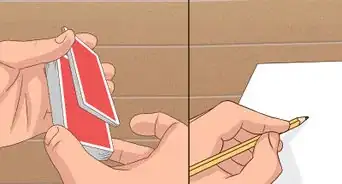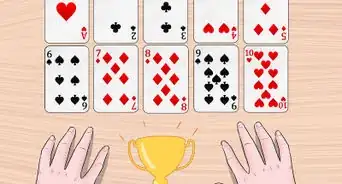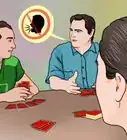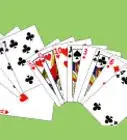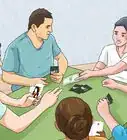This article was co-authored by wikiHow Staff. Our trained team of editors and researchers validate articles for accuracy and comprehensiveness. wikiHow's Content Management Team carefully monitors the work from our editorial staff to ensure that each article is backed by trusted research and meets our high quality standards.
wikiHow marks an article as reader-approved once it receives enough positive feedback. In this case, 84% of readers who voted found the article helpful, earning it our reader-approved status.
This article has been viewed 853,418 times.
Learn more...
Skip-Bo is a card game for 2 to 6 players that is similar to solitaire. The object is to get rid of your cards while blocking other players from discarding theirs. Since anyone over age seven can play, Skip-Bo is a great game for families.
Steps
Learning the Rules
-
1Learn the objective. A Skip-Bo deck has a total of 144 cards numbered 1 to 12 and 16 "skip-bo" cards, which are wild. Each player is dealt a pile 10 to 30 cards, depending on the number of players. Each player's pile of cards is called a stockpile. The point of Skip-Bo is to play every card in your stockpile in numerical order. The first person to play every card in their pile is the winner.[1]
- Even though the cards are multi-colored in Skip-Bo, these colors are irrelevant. All you need to worry about is the number on the cards.[2]
-
2Know how to use the different piles. Aside from each player's stockpile, there are three other types of piles used for three different purposes. However, it is important to understand how each one works before you start playing the game.[3]
- After all of the cards have been dealt, place the remaining cards in the middle of the players. This is called the draw pile. Each player will draw from this pile at the beginning of their turn, and use the cards to create building piles.
- When play begins, players start getting rid of their cards by making building piles in the middle of the table. There are four building piles, and each one must start with either a 1 or a Skip-Bo card.
- At the end of each turn, players discard a card into a discard pile. Each player can have up to four discard piles, and the cards in these piles should be facing up. The cards in the discard piles can be used in succeeding turns to add to the build piles.
Advertisement -
3Know how to win the game. Throughout the game, the goal is to get rid of all of your cards as quickly as possible by putting them into building piles. The first person to play every card in his or her stockpile wins the game.[4]
- You can strategize against other players by preventing them from getting rid of their cards more quickly than you get rid of yours. Since you can see what cards other players have in their discard piles, you can play cards that will block them from being able to play these cards.
- You'll get rid of your cards faster if you play the cards from your stockpile before playing those in your discard pile.
-
4Keep score if desired. Keeping score while playing Skip-Bo is optional, but it can be a great way to extend the game to multiple rounds. To keep score, have each player count their remaining cards at the end of the game and multiply this number by 5. The winning player gets these points plus 25 for winning the game. The first player to reach 500 points wins.[5]
- 500 points is just a starting point recommended for score keeping, but you can go for a higher number if you want to play more rounds.[6]
-
5Play on teams for a change. After you have mastered the basic rules of Skip-Bo, you might consider playing on teams. This adds some extra strategy and cooperation. To play in teams, follow the same rules as normal Skip-Bo, but you can use your teammate’s discard piles to help you with your turn.[7]
- Divide your total players evenly to play in teams. For example, if four people are playing, then you could play in teams of two.
Setting Up the Game
-
1Play at a large table. Since Skip-Bo involves so many different piles of cards, it's best to play at a large, round table. That way everyone has room for their stockpile and four discard piles, and there's room in the middle of the table for the draw pile and four building piles. Things can get pretty crowded if you try to play at a small table.
-
2Shuffle and deal the cards. Since the deck is so big, you may need to divide it into more than one stack to shuffle it properly. When it comes to dealing, deal cards based on how many players you have. If you have two to four players, each player gets 30 cards. If you have five or six players, each player gets 20 cards.[8]
-
3Have each player make a stockpile. Each player should place their pile of cards directly in front of them on the table, face down. These are the players' stockpiles.[9]
-
4Create a draw pile. Put the extra cards face down in the middle of the table. This is the draw pile. Make sure that there is extra space next to the draw pile for the building piles. You won’t have anything to put into them yet, but you will build them as you play.[10]
Playing the Game
-
1Decide who goes first. Whoever is sitting to the left of the dealer is usually who goes first in Skip-Bo.[11] However, if you prefer to have the youngest player go first, or choose another method of picking who will go first, then you can do that.
-
2Flip over your top stockpile card. Begin your first turn by flipping over the top card in your stockpile. Everyone will start their first turn in the same manner.[12]
-
3Draw five cards. Next, draw five cards from the draw pile. You will always need to have a hand of five cards at the beginning of your turn, so you may need to draw between one and five cards every turn.[13]
-
4Check your hand. After you have revealed your stockpile card and you have five cards in your hand, then you can examine your cards to see if you can add to a build pile. Each build pile is the beginning of a sequence, and the pile is "built" when more cards are added in sequential order - a 2, a 3, a 4, and so on. You can fill in any gaps with Skip-Bo wild cards. Remember that the colors do not matter in Skip-Bo, and only pay attention to the numbers. On your first turn:[14] [15]
- If you have a 1 or a Skip-Bo wild card in your hand or at the top of your stockpile, then you can start a build pile.
- If you don’t have a 1 or a Skip-Bo card, then discard one card to form your first discard pile. You can form up to four discard piles in subsequent turns.
- If someone else went before you, then you can also add to their build pile.
-
5Keep going until you have no cards left to keep building the sequence. Play all five cards in your hand if you can. If you have any cards left, then discard one card to form a discard pile before ending your turn.[16]
-
6Continue taking turns. In subsequent turns, players draw enough cards to add up to a hand of five cards. For example, if you play all five cards in one turn, then draw five the next turn; if you have three cards left after a turn, then draw two for your next turn.[17]
- After the first turn, players may use cards in their discard piles to add to the building piles.
- When a building pile reaches the number 12, scoop it up and set it aside to be added to the draw pile when it runs down. A new building pile may be started in its place with a 1 or a Skip-Bo card.
-
7Keep playing until someone's stockpile runs out. Go around and around the table until a player runs out of cards in his or her stockpile. This player wins the game.[18]
Community Q&A
-
QuestionCan I discard a wild card?
 Community AnswerYes. You may decide to end your turn even if you could still make a play, and discard any card. This may be a good idea if the wild card is your last card in hand and you'd rather save it in your discard pile until you get five more cards next turn.
Community AnswerYes. You may decide to end your turn even if you could still make a play, and discard any card. This may be a good idea if the wild card is your last card in hand and you'd rather save it in your discard pile until you get five more cards next turn. -
QuestionWhat do you do when you cannot discard a card?
 Community AnswerYou can always discard a card, unless you have no cards in your hand. If that's the case, then pick up more cards until you have a full hand and keep playing until you have a card to discard.
Community AnswerYou can always discard a card, unless you have no cards in your hand. If that's the case, then pick up more cards until you have a full hand and keep playing until you have a card to discard. -
QuestionWhat do I do with the card I pull from the stock pile on each turn?
 Community AnswerOnly pull it from the stockpile if you are going to use it. Don't discard it or keep it in your hand. Always keep the first card of the stockpile flipped over, on top of the pile.
Community AnswerOnly pull it from the stockpile if you are going to use it. Don't discard it or keep it in your hand. Always keep the first card of the stockpile flipped over, on top of the pile.
Things You'll Need
- A deck of Skip-Bo cards
- Hard surface to play on
- 2 to 6 players
References
- ↑ https://service.mattel.com/instruction_sheets/42050.pdf
- ↑ http://www.unorules.com/skip-bo-rules/
- ↑ https://service.mattel.com/instruction_sheets/42050.pdf
- ↑ https://service.mattel.com/instruction_sheets/42050.pdf
- ↑ https://service.mattel.com/instruction_sheets/42050.pdf
- ↑ http://howdoyouplayit.com/play-skip-bo-rules-skip-bo-card/
- ↑ http://howdoyouplayit.com/play-skip-bo-rules-skip-bo-card/
- ↑ https://service.mattel.com/instruction_sheets/42050.pdf
- ↑ https://service.mattel.com/instruction_sheets/42050.pdf
- ↑ https://service.mattel.com/instruction_sheets/42050.pdf
- ↑ https://service.mattel.com/instruction_sheets/42050.pdf
- ↑ https://service.mattel.com/instruction_sheets/42050.pdf
- ↑ https://service.mattel.com/instruction_sheets/42050.pdf
- ↑ http://www.unorules.com/skip-bo-rules/
- ↑ https://service.mattel.com/instruction_sheets/42050.pdf
- ↑ https://service.mattel.com/instruction_sheets/42050.pdf
- ↑ https://service.mattel.com/instruction_sheets/42050.pdf
- ↑ https://service.mattel.com/instruction_sheets/42050.pdf
About This Article
Skip-Bo is a fun card game that can be played with 2 to 6 people. The goal of the game is to get rid of your cards before all of the other players. To play, you’ll need a deck of cards designed specifically for Skip-Bo. First, shuffle the cards and deal each player their hand. For a 2 to 4 player game, deal each player 30 cards. For a 5 to 6 player game, deal each player 20 cards. Keep your cards face-down in a pile, except for the top card, which you should flip up. Place the leftover cards face-down in the center of the table. The player to the left of the dealer goes first. To start your turn, draw from the face-down pile in the center of the table until you have 5 cards. Then, see if you can play any of your cards, including the face-up card on your pile or one of the 4 piles in the center of the playing area. In order to play one of your cards on a center pile, it must be the next card in ascending order. Skip-Bo cards are wild and can be used as any card. To start a new center pile on the table, you must play a 1. If you put a 12 on a pile, the pile is discarded, and the space opens up for a new pile to start. There can only be 4 piles on the table at one time. If you play a card from the top of your personal pile, flip up the next card in the pile. Continue your turn until you’re unable to play any more cards. Then, discard a card from your hand. Every player has 4 discard piles. You can stack discarded cards and play them on the center piles as long as they’re at the top of the discarded stack. If you manage to play all 5 of the cards in your hand in one turn, draw another 5 cards from the deck and continue playing. Once a player discards, it’s the player to their left’s turn. Play continues until one player plays all of the cards in their personal pile. Whoever runs out of cards in their personal pile first wins! For tips on how to set up the game effectively, read on!
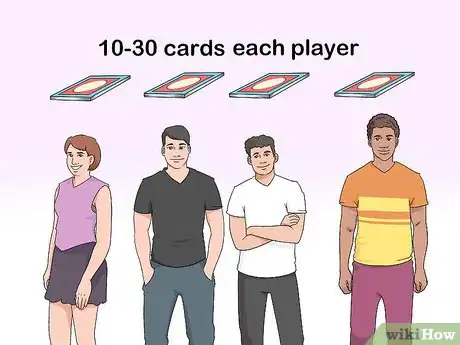

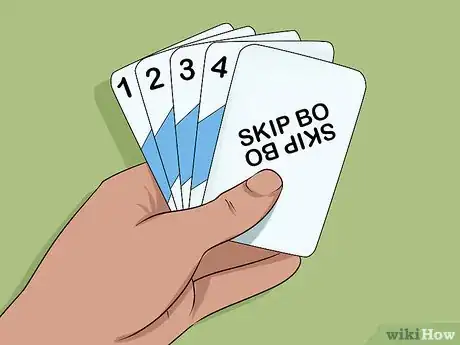
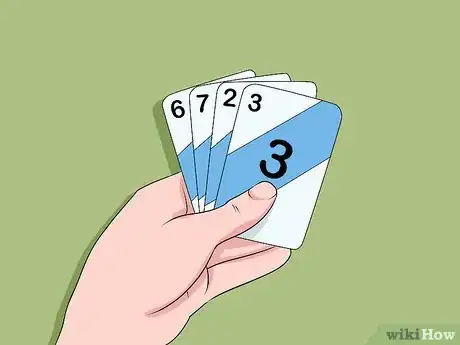
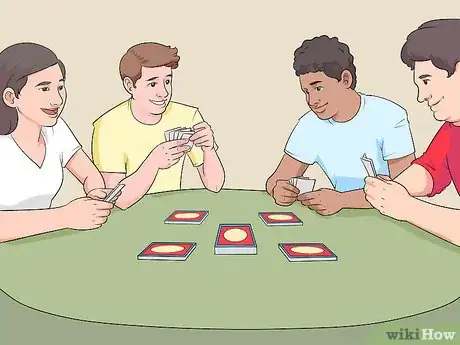
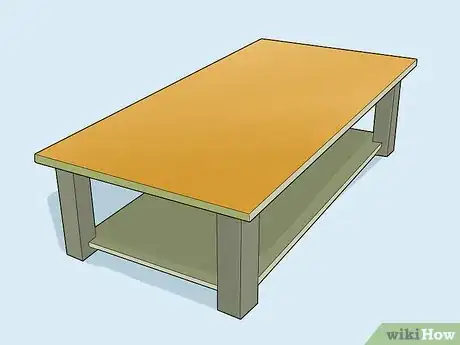
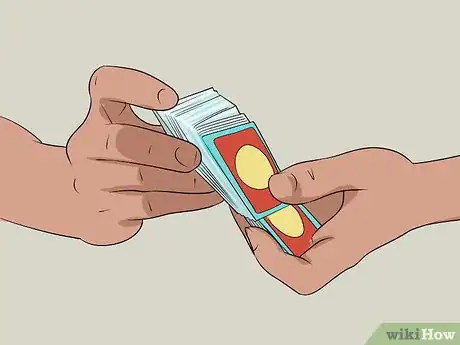


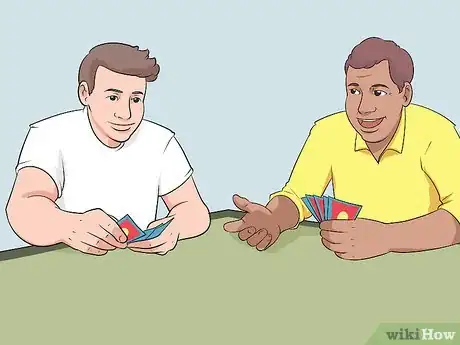
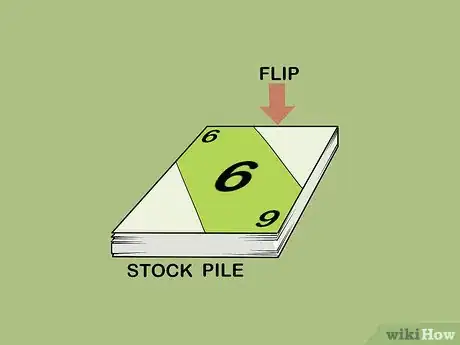

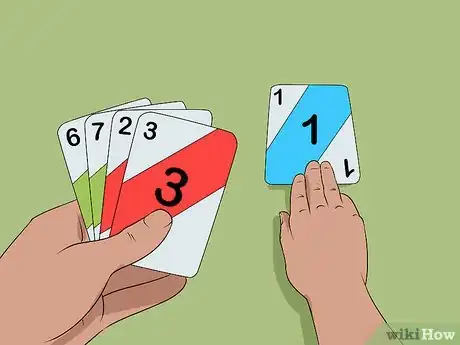
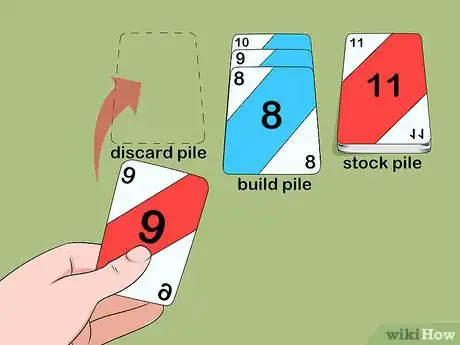
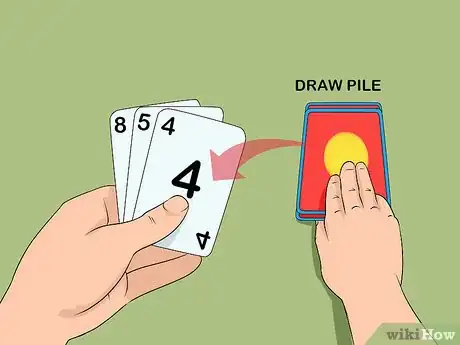
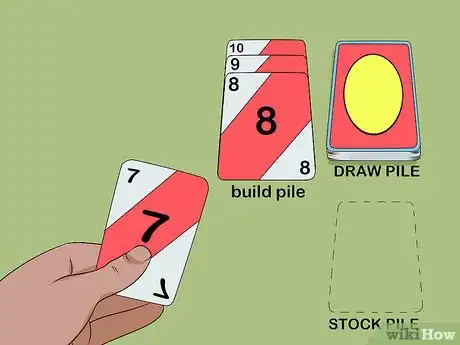
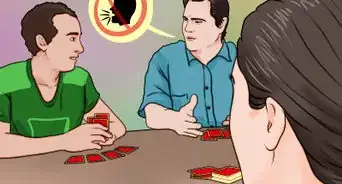
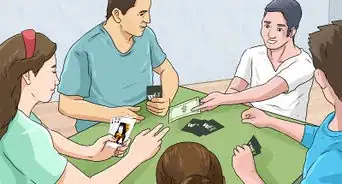

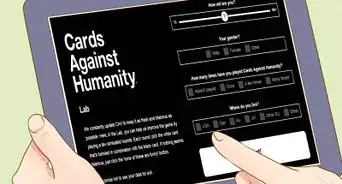
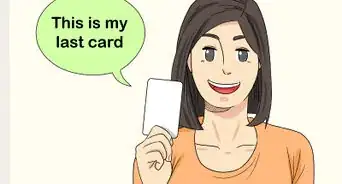

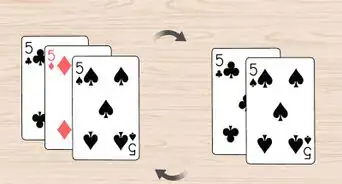

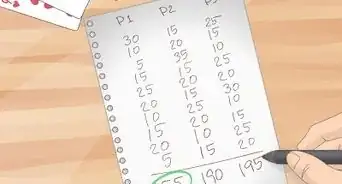

-Step-17.webp)
